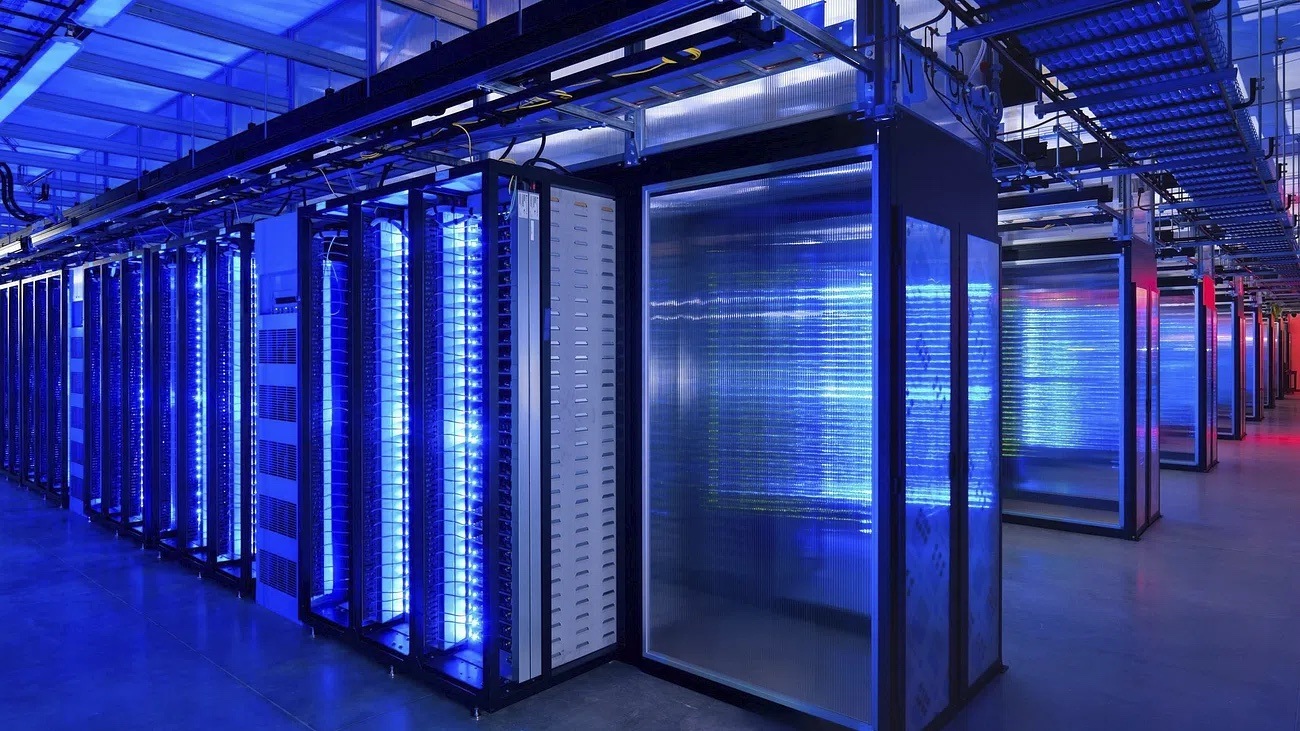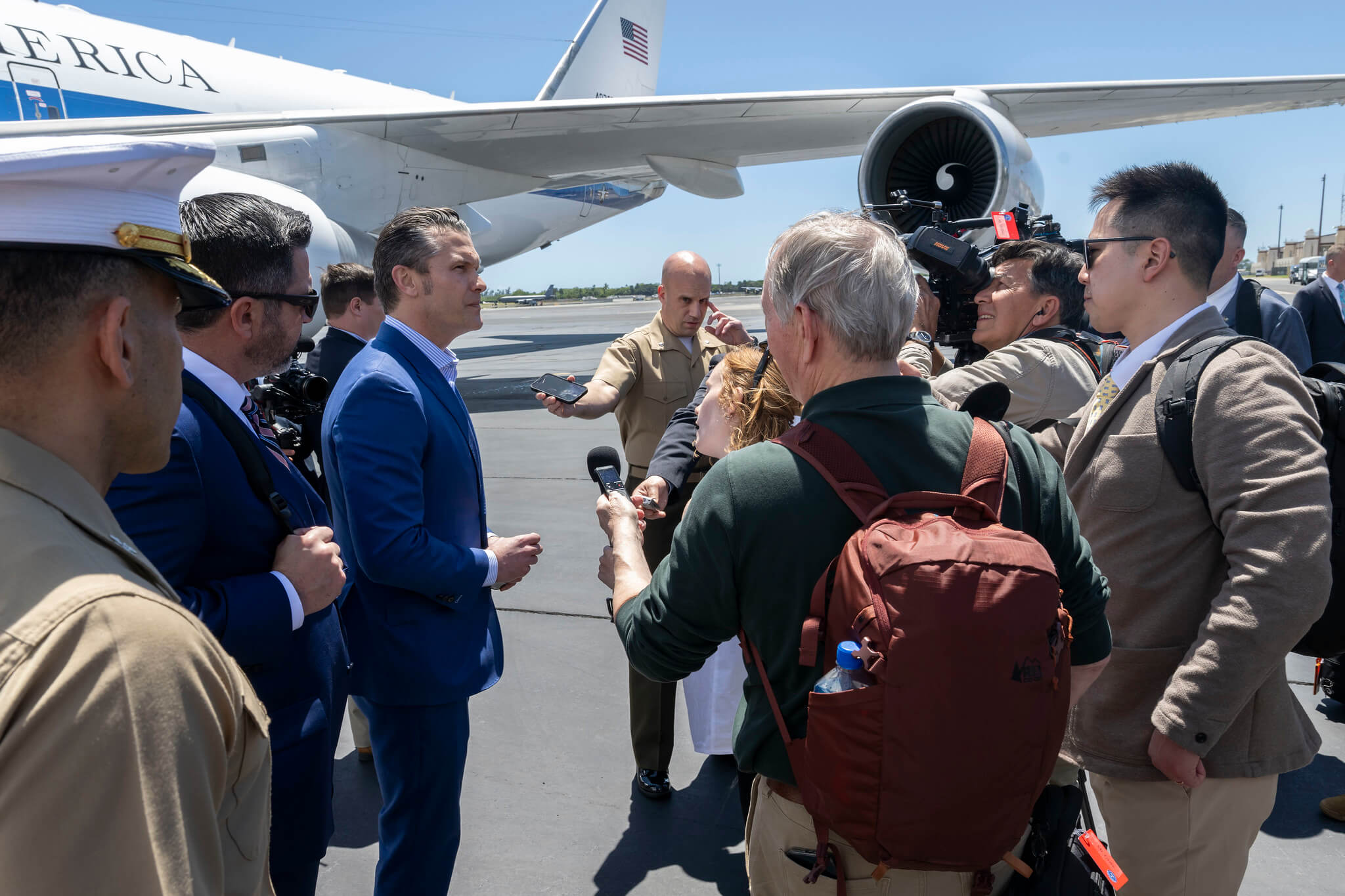SinoTech: No Sign of a U.S.-China Trade Agreement
The trade war continues. The United States and China imposed their latest waves of tariffs on Sept. 24, deepening tensions between the two countries. The U.S.
Published by The Lawfare Institute
in Cooperation With

The trade war continues. The United States and China imposed their latest waves of tariffs on Sept. 24, deepening tensions between the two countries. The U.S. kicked things off with new 10 percent duties against $200 billion in Chinese imports; those will increase to 25 percent on Jan. 1. The United States is now levying tariffs against $250 billion in Chinese imports. President Trump has also threatened tariffs against an additional $267 billion in Chinese imports—combined with existing tariffs, that sum would cover all Chinese imports to the U.S.—but the U.S. trade representative has not initiated the agency rulemaking process necessary to implement those threats. China immediately responded by imposing 5 to 10 percent tariffs against $60 billion in American imports and by lodging a new complaint against the United States at the World Trade Organization.
China’s trade surplus with the United States limits its ability to respond to future American tariffs in kind. As such, Chinese officials have pledged to counter through “qualitative tools”, though they have been coy about what those tools might include. Premier Li Keqiang promised at a September meeting of the World Economic Forum that the Chinese government would not manipulate its currency—but the government may instead make use of internal regulations that limit market access or increase regulatory hurdles to counteract additional U.S. tariffs. China is also reportedly planning to reduce tariffs on a variety of imports in order to steady consumer prices, although those reductions are unlikely to extend to American imports.
Trump’s announcement of a rejiggered NAFTA demonstrates that aggressive trade moves may force close allies to budge. Notwithstanding Mexico and Canada’s concessions to pressure from the Trump administration, recent posturing by the U.S. and China makes it difficult to imagine that the two countries could achieve a similar deal in the immediate future. In fact, the trade conflict may be shifting the United States and China toward more enduring antagonism. After the U.S. imposed its $200 billion tariffs, Chinese officials called off trade talks planned for the week of Sept. 24, as well as an annual security summit that had been scheduled for mid-October. China’s State Council published a 71-page white paper (available here in .doc format) outlining its “Position on China-U.S. Trade Friction” and accusing the United States of “trade bullyism.” Other officials, along with Chinese state media, have taken similarly defiant stances.
Speaking at the unveiling of the amended NAFTA, Trump warned that it was “too early to talk,” suggesting the U.S. needed to wait for China began to feel the tariffs’ bite in earnest. The resolution of the NAFTA deal may now allow President Trump to focus his trade attention on China.
Google Faces Heat on China
On Sept. 26, the Senate Commerce Committee summoned top officials from Google, Amazon, Apple, Twitter and other leading tech companies to a hearing on the companies’ data collection and privacy practices. Although the hearing focused on the possibility of federal data-privacy legislation, lawmakers also grilled Google Chief Privacy Officer Keith Enright over Google’s controversial “Dragonfly” project, a plan to develop a censored search engine for the Chinese market. Enright publicly acknowledged Dragonfly’s existence for the first time, but claimed that Google was not “close to launching a search engine in China” and stated that Google’s future plans remained uncertain. In particular, he declined to address the privacy implications and human-rights concerns of Dragonfly, maintaining that he is “not clear on the contours of what is in scope or out of the scope” for the project.
Just days before the hearing, Google reportedly attempted to suppress publication of an internal memo detailing Dragonfly’s operation. The memo, which circulated among Google employees protesting against the development of the project, revealed that Dragonfly would require users to log in for any searches, track their location and save their search history with a Chinese partner who would have “unilateral access” to the data. Google’s leadership was said to be “furious” about the leak and subsequently prompted human-resources personnel to instruct employees who had accessed or saved the memo to delete it.
But the controversy is unlikely to stop anytime soon. Google’s senior research scientist Jack Poulson, who resigned in protest last month, wrote a letter to Congress asking lawmakers to exert “greater oversight and accountability” over his former company. Meanwhile, Google CEO Sundar Pichai met privately with House Majority Leader Kevin McCarthy and other Republican representatives on Sept. 28, likely to address concerns Google’s dealings with China, along with the company’s alleged bias against conservatives. Pichai has also agreed to testify before the House Judiciary Committee in November, and he will attend a future White House roundtable with the president and other tech executives.
In Other News
- On Sept. 26, Trump publicly accused China of interfering with the upcoming midterm elections at the U.N. Security Council. The president claimed that evidence of this interference “will come out”; he later pointed on Twitter to sponsored publication of China Daily articles in the Des Moines Register. China maintained that it does not interfere in other countries’ internal affairs. At a press conference on the same day, Trump said that his oft-mentioned friendship with Chinese President Xi Jinping might have come to an end.
- Director of National Intelligence Dan Coats warned that China has been increasingly aggressive in honing its cyber capacities and in using those capabilities both to enhance its surveillance measures internally and to undermine U.S. interests. China, Coats said, is actively targeting U.S. state and local governments and officials to exploit “any divisions between federal and local levels on policy.”
- Introducing a new national U.S. cyber strategy unveiled on Sept. 20, national security adviser John Bolton announced that the White House has “authorized offensive cyber operations.” Authority for launching offensive cyber operations will reside in the Defense Department and intelligence agencies. The Pentagon also unveiled a new cyber strategy focused on the U.S. military’s ability to “defend forward” against cyber threats.
- Ji Chaoquan, a Chinese national and reservist in the U.S. army, was arrested on Sept. 25 for providing information on naturalized American defense-contractor employees to Chinese intelligence. The Justice Department has charged Chaoquan with acting as an agent of a foreign government without notifying the attorney general. Chaoquan’s handler had already been arrested earlier this year.
- Alibaba chairman Jack Ma has backed down from his pledge to bring 1 million jobs to the United States, stating that “the premise of friendly U.S.-China partnership and rational trade relations ... no longer exists today, so our promise cannot be fulfilled.” Ma, who announced on Sept. 9 that he will step down from his post next year, has consistently predicted that the U.S.-China trade conflict could last for many years.
Commentary & Analysis
Elsewhere on Lawfare, Rush Doshi and Robert Williams examine Trump’s claim of Chinese election interference and argue that China is indeed pursuing influence efforts in the United States and elsewhere—though these efforts differ from Russia’s in important respects. Dave Weinstein analyzes the Defense Department’s pledge to “defend forward” against cyber threats in its 2018 Cyber Strategy, and Robert Chesney frames that pledge in the context of the 2019 National Defense Authorization Act and the Trump administration’s loosening of Presidential Policy Directive 20. Susan Landau suggests that the Five Eyes intelligence alliance’s calls for tech companies to assist in decryption may be overblown. Merle Maigre calls for greater international dialogue to establish clearer norms in cyberspace.
Last week’s Cyberlaw Podcast touches on the Treasury Department’s recent sanctions against a Chinese military organization for purchasing weapons from sanctioned Russian arms dealers (at 13:50) and Sen. Marco Rubio’s letter asking why Apple had failed to alert certain users that their data was being sent back to China (at 23:20). In last Tuesday’s Lawfare Podcast, Benjamin Wittes and Jim Baker discuss how the national security applications of artificial intelligence have made that technology an increasing target of, and vehicle for, intelligence operations. In last Saturday’s edition of the podcast, Scott Anderson and Elsa Kania talk over China’s national drive to push ahead in quantum computing technology.
At Brookings, Jeffrey Bader has written a report warning against U.S. disengagement from China, and Ryan Hass suggests that tensions between the two countries may have reached an inflection point over the past month. American, Australian and German experts weigh in at the Australian National Policy Institute on whether the Chinese government has violated the agreement of the 2015 G20 Leaders’ Communiqué to refrain from industrial cyber espionage. At New America, Rogier Creemers, Paul Triolo and Graham Webster have translated and provided background on the first major public policy statement from Zhuang Rongwen, the new head of the Cyberspace Administration of China. And Brad Setser examines at the Council on Foreign Relations how China has managed the valuation of the yuan over the course of the trade conflict, and how those strategies may shift in the future.
In the New York Times, Jane Perlez outlines the international and domestic contexts in which President Xi finds himself operating, and Mark Landler warns that the United States and China could settle into a “new cold war.” Abigail Grace cautions in the Atlantic that the future of U.S.-China relations cannot be so easily analogized to past circumstances. In the Washington Post, Anna Fifield outlines Chinese views of the trade war as part of a larger campaign to stymie China’s rise. Finally, in the Wall Street Journal, Chuin-Wei Yap examines American industry’s reliance on Chinese imports now subject to tariffs.
Correction: A previous version of this post incorrectly identified Jack Ma as the chairman and CEO of Tencent, a Chinese investment conglomerate. In fact, Ma is the chairman of Alibaba. This correction was issued at 11:36 a.m. on Oct. 3, 2018.



.png?sfvrsn=a129966b_5)


